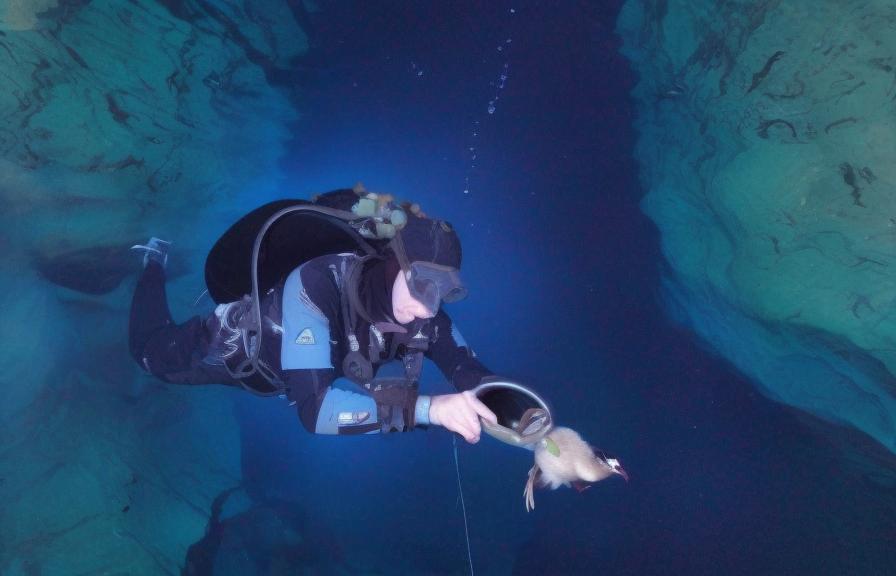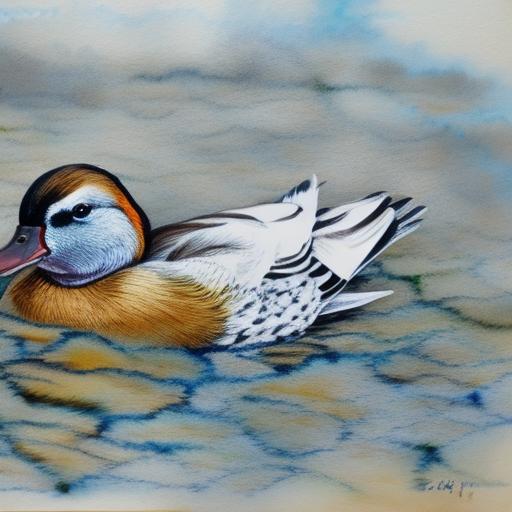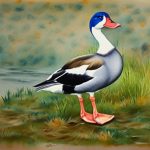Migratory bird breeding areas play a crucial role in the life cycle of countless bird species. These areas provide a safe and suitable environment for birds to build nests, lay eggs, and raise their young. The availability of high-quality breeding habitats is essential for the survival and reproductive success of migratory birds. These areas are also important for maintaining healthy bird populations and preserving biodiversity. Additionally, migratory bird breeding areas contribute to the overall health of ecosystems by supporting food webs and providing essential ecosystem services.
Migratory bird breeding areas are also significant for the economy and human well-being. Birdwatching and ecotourism are popular activities that generate revenue for local communities and contribute to the conservation of natural habitats. Furthermore, migratory birds play a vital role in controlling insect populations, pollinating plants, and dispersing seeds, which are essential for agriculture and maintaining healthy ecosystems. Protecting and preserving these breeding areas is crucial for ensuring the continued existence of migratory bird species and the benefits they provide to both wildlife and people.
Key Takeaways
- Migratory bird breeding areas are crucial for the survival and reproduction of many bird species, playing a key role in maintaining biodiversity and ecosystem balance.
- Ideal breeding habitats for migratory birds include areas with abundant food, suitable nesting sites, and minimal disturbance from human activities.
- Threats to migratory bird breeding areas include habitat loss, pollution, climate change, and human disturbance, which can lead to population declines and even extinction of certain species.
- Conservation efforts for migratory bird breeding areas involve habitat restoration, protected area designation, and international cooperation to address threats across migratory routes.
- Climate change is impacting migratory bird breeding areas by altering the timing of migration, availability of food, and increasing the frequency of extreme weather events, posing significant challenges for bird populations.
- Wetlands play a crucial role in providing breeding and feeding grounds for migratory birds, and their conservation is essential for the long-term survival of these species.
- Sustainable management of migratory bird breeding areas involves balancing the needs of birds with human activities, such as sustainable agriculture and responsible tourism, to ensure the continued health of these important habitats.
Characteristics of Ideal Breeding Habitats for Migratory Birds
Ideal breeding habitats for migratory birds share several key characteristics that are essential for the survival and reproductive success of bird species. These habitats typically include a variety of features such as suitable nesting sites, abundant food sources, access to water, and protection from predators. The availability of diverse vegetation types, including trees, shrubs, and grasslands, is also important for providing cover and nesting materials for different bird species.
In addition, ideal breeding habitats should be located in areas with minimal human disturbance, such as noise pollution, habitat destruction, and pollution. These areas should also have suitable climate conditions, including temperature, precipitation, and seasonal changes, to support the specific needs of migratory bird species during their breeding season. Access to suitable migration routes and stopover sites is also crucial for ensuring that birds can safely travel to and from their breeding areas.
Overall, ideal breeding habitats for migratory birds are characterized by a combination of factors that provide the necessary resources and conditions for birds to successfully reproduce and raise their young. Protecting and preserving these habitats is essential for the long-term survival of migratory bird species.
Threats to Migratory Bird Breeding Areas
Migratory bird breeding areas face a range of threats that can negatively impact the survival and reproductive success of bird species. Habitat loss and degradation due to human activities such as urbanization, agriculture, deforestation, and infrastructure development are major threats to breeding areas. These activities can result in the destruction of nesting sites, loss of food sources, and fragmentation of habitats, making it difficult for birds to find suitable breeding grounds.
In addition, pollution from pesticides, chemicals, and waste can contaminate breeding areas and harm bird populations. Climate change is also a significant threat to migratory bird breeding areas, as it can alter temperature patterns, precipitation levels, and the availability of food sources, affecting the timing of migration and breeding for many bird species.
Furthermore, invasive species and predators can disrupt breeding habitats by competing with native birds for resources or preying on eggs and young birds. Human disturbance, such as recreational activities, hunting, and disturbance from pets, can also disrupt breeding behaviors and cause stress to bird populations.
Overall, addressing these threats is crucial for protecting migratory bird breeding areas and ensuring the survival of bird species throughout their annual life cycle.
Conservation Efforts for Migratory Bird Breeding Areas
Conservation efforts for migratory bird breeding areas are essential for protecting these critical habitats and ensuring the survival of bird species. One key conservation strategy is the establishment of protected areas such as national parks, wildlife refuges, and conservation reserves that provide safe havens for birds to breed and raise their young. These protected areas help to minimize habitat loss and degradation while providing essential resources for migratory birds.
Habitat restoration and management are also important conservation efforts that focus on restoring degraded habitats, creating new nesting sites, and improving the quality of breeding areas for migratory birds. This can involve planting native vegetation, controlling invasive species, and implementing sustainable land management practices to enhance the suitability of breeding habitats.
Furthermore, raising awareness about the importance of migratory bird breeding areas and promoting responsible behavior among the public is crucial for minimizing human disturbance and reducing threats to bird populations. Education programs, outreach initiatives, and community engagement can help to foster a greater understanding and appreciation for migratory birds and their habitats.
Collaborative efforts between governments, conservation organizations, researchers, and local communities are essential for implementing effective conservation measures and ensuring the long-term protection of migratory bird breeding areas.
Impact of Climate Change on Migratory Bird Breeding Areas
Climate change has significant impacts on migratory bird breeding areas, affecting the availability of suitable habitats, food sources, and climate conditions for bird species. Changes in temperature patterns and precipitation levels can alter the timing of migration and breeding for many bird species, leading to mismatches with food availability and impacting reproductive success.
Rising temperatures can also affect the distribution of bird species by shifting their ranges northward or to higher elevations in search of suitable climate conditions. This can result in increased competition for resources and potential conflicts with other species in new areas.
Furthermore, extreme weather events such as storms, droughts, and heatwaves can directly impact breeding habitats by causing habitat destruction, flooding, or food shortages for birds. These events can also disrupt migration patterns and cause stress to bird populations.
Overall, climate change poses significant challenges for migratory bird breeding areas by altering the environmental conditions that are essential for the survival and reproductive success of bird species. Addressing these challenges requires proactive measures to mitigate climate change impacts and protect critical habitats for migratory birds.
Role of Wetlands in Migratory Bird Breeding

Wetlands play a crucial role in providing essential breeding habitats for many migratory bird species. These diverse ecosystems support a wide variety of waterfowl, shorebirds, and other bird species by providing abundant food sources, nesting sites, and protection from predators. Wetlands also serve as important stopover sites for migratory birds during their long journeys, offering resting places and refueling opportunities before continuing their migrations.
The unique characteristics of wetlands, including shallow water bodies, marshes, swamps, and mudflats, provide ideal conditions for many bird species to breed and raise their young. The abundance of aquatic plants, invertebrates, fish, and other food sources in wetlands supports the high energy demands of breeding birds during their reproductive activities.
Furthermore, wetlands contribute to the overall health of ecosystems by filtering water, controlling floods, sequestering carbon, and supporting diverse plant and animal communities. Protecting and preserving wetlands is essential for maintaining healthy breeding habitats for migratory birds and ensuring the continued existence of these critical ecosystems.
Sustainable Management of Migratory Bird Breeding Areas
Sustainable management of migratory bird breeding areas is essential for balancing the needs of bird species with human activities while maintaining healthy ecosystems. This involves implementing conservation measures that protect critical habitats while allowing for sustainable use of natural resources by local communities.
One key aspect of sustainable management is the implementation of land-use planning that considers the needs of migratory birds when making decisions about development, agriculture, forestry, and infrastructure projects. This can help minimize habitat loss and degradation while identifying suitable areas for conservation and restoration efforts.
In addition, promoting sustainable agricultural practices that minimize chemical use, preserve natural habitats within agricultural landscapes, and provide nesting opportunities for birds can help support healthy breeding habitats. Collaborating with landowners to implement wildlife-friendly practices such as creating buffer zones around wetlands or leaving unharvested fields can also benefit migratory bird populations.
Furthermore, engaging local communities in conservation efforts through education programs, capacity building initiatives, and sustainable livelihood opportunities can foster a greater sense of stewardship for migratory bird breeding areas. By working together with stakeholders at all levels, sustainable management practices can help ensure the long-term conservation of these critical habitats while supporting the needs of both wildlife and people.
If you’re interested in learning more about breeding ducks and their mating season, you might find the article “When is Duck Mating Season?” on PoultryWizard.com particularly informative. This article delves into the specific timing and considerations for breeding ducks, offering valuable insights for those looking to engage in duck breeding. Whether you’re a novice or experienced breeder, understanding the intricacies of duck mating season is crucial for successful breeding practices. Check out the article here to enhance your knowledge on this topic.
FAQs
What are the main areas of breeding for migratory birds such as ducks?
The main areas of breeding for migratory birds such as ducks are typically located in the northern regions of North America, Europe, and Asia. These areas include wetlands, marshes, and other water-rich habitats that provide suitable nesting and feeding grounds for the birds.
Why do migratory birds such as ducks breed in specific areas?
Migratory birds such as ducks breed in specific areas because these locations provide the necessary resources for successful reproduction, such as food, water, and shelter. These areas also offer protection from predators and other threats, allowing the birds to raise their young in a relatively safe environment.
What factors influence the choice of breeding areas for migratory birds such as ducks?
The choice of breeding areas for migratory birds such as ducks is influenced by a variety of factors, including the availability of suitable nesting sites, the abundance of food sources, the presence of predators, and the overall environmental conditions. Additionally, the birds’ instinctual migratory patterns and the need to find suitable habitats for raising their young also play a significant role in determining their breeding areas.
How do conservation efforts impact the breeding areas of migratory birds such as ducks?
Conservation efforts play a crucial role in protecting and preserving the breeding areas of migratory birds such as ducks. By implementing measures to conserve wetlands, marshes, and other critical habitats, conservation efforts help ensure that these areas remain viable for breeding and nesting. This, in turn, contributes to the long-term survival of migratory bird populations.
What are the potential threats to the breeding areas of migratory birds such as ducks?
The breeding areas of migratory birds such as ducks are threatened by various factors, including habitat loss due to human development, pollution, climate change, and invasive species. These threats can disrupt the delicate balance of the ecosystem and negatively impact the availability of resources needed for successful breeding and nesting. Conservation efforts are essential for mitigating these threats and protecting the breeding areas of migratory birds.
Meet Walter, the feathered-friend fanatic of Florida! Nestled in the sunshine state, Walter struts through life with his feathered companions, clucking his way to happiness. With a coop that’s fancier than a five-star hotel, he’s the Don Juan of the chicken world. When he’s not teaching his hens to do the cha-cha, you’ll find him in a heated debate with his prized rooster, Sir Clucks-a-Lot. Walter’s poultry passion is no yolk; he’s the sunny-side-up guy you never knew you needed in your flock of friends!







